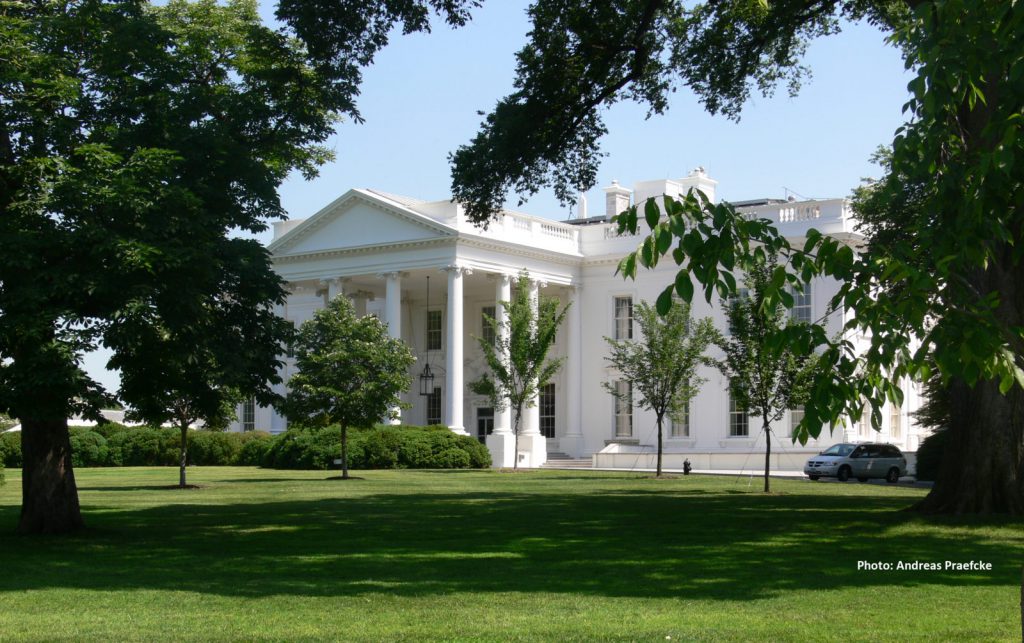
Published January 23, 2015
National Review - January 26, 2015 issue
In the Book of Exodus, God takes the form of a burning bush to reveal himself to Moses. Today’s GOP establishment seems to be revealing its agenda by way of a Bush, too. What worked for the Israelites, however, may not turn out so well for the GOP.
That’s because the establishment agenda Bush seems poised to offer is strikingly out of step with the voters who will decide the 2016 Republican nomination and the general election.
The GOP’s base voters are deeply unhappy about the establishment’s support for high levels of immigration, while working-class whites and Hispanics have generally been underwhelmed by the establishment’s economic message. Jeb Bush’s best chance to become president therefore seems likely to be running as the sort of innovative, principled conservative he was as governor of Florida, crafting his own distinct, more populist, message. That will require some transfiguration.
Bush’s unpopularity with the conservative base is well known. National polls consistently show him losing among the more conservative voters to other likely candidates. A recent McClatchy-Marist poll showed Bush getting only 8 percent of the vote among Republicans who support the Tea Party, leaving him behind Ben Carson, Mike Huckabee, and Ted Cruz.
While the choice of the party’s base normally doesn’t win the nomination — the victor tends to be the favorite of the establishment and “somewhat conservative” types — 2016 could be different. Very conservative voters tend to dominate primaries in the Deep South and caucuses in the Midwest and Rocky Mountain states. New GOP rules this cycle require delegates in caucus states to be pledged in proportion to the number of votes a candidate receives in that caucus’s straw poll. In previous nomination contests, the establishment often had influence over the state conventions that actually select the delegates, depriving conservative candidates such as Rick Santorum of the full benefits of winning a caucus state.
The base’s choice is also likelier to win the nomination this time because he probably won’t be stereotyped as a religious conservative. In 1996, 2008, and 2012, the favorites of the most conservative voters were Pat Buchanan, Mike Huckabee, and Rick Santorum, all of them vocal about their religious commitments. Once the race narrowed down to two serious candidates, each was defeated as voters not primarily motivated by religion lined up behind an establishment favorite who seemed more electable. This cycle, however, the most conservative candidate is likely to be someone such as Ben Carson, Rand Paul, or Ted Cruz. Each of these candidates will strike themes pleasing to religious conservatives, but none is so defined by his religiosity or his views on social issues as to be considered unacceptable by less religious conservatives. In the race’s later stages, that person should pose more of a threat to the establishment choice than have previous conservative favorites.
Bush faces another challenge in getting the nomination: serious competition from his left. The modern GOP is a conservative party, but even now about 30 percent of Republican-primary voters describe themselves as moderates or liberals. The percentage is higher in key states such as New Hampshire and in the Midwest. Moderates are the largest ideological faction in the New Hampshire Republican presidential primary, for instance, forming between 45 and 49 percent of the electorate since 1996. Candidates who appeal to this group may have a hard time winning the nomination, but they could cause Bush serious trouble in the early going.
Two candidates so far seem able to compete with Bush among such voters: Rand Paul and Chris Christie. The most recent Washington Post poll showed Paul running even with Bush among moderate Republicans, and the McClatchy poll showed Christie running a strong second to Bush among Republicans who are not tea-party supporters. Since the states with high numbers of moderates also permit independents to vote in the Republican race, a candidate who inspires non-traditional Republicans to vote (as John McCain did in 2000) can wreak havoc. Caught between charismatic candidates to his right and his left, Bush may not survive the early contests.
Nevertheless, running a bland, establishment-Republican campaign has traditionally been the ticket to the nomination. The early indication is that Bush will run a similar race. Indeed, in a letter to Iowa voters sent in the month before he formally announced he’d consider running, Bush nodded toward the establishment’s domestic priorities: comprehensive tax reform, cutting entitlements such as Social Security and Medicare, an accommodating policy on immigration, and federal efforts to improve public education. Presumably he sees these policies as likely to help present the “more uplifting, more positive” agenda that non-core Republicans will rally to. If so, he will probably find himself to be sorely mistaken.
Any Republican nominee faces the same basic challenge to win back the White House: hold every state won by Mitt Romney and pick up enough of the small number of swing states to get to 270 electoral votes. Those states have remained roughly the same since the 2000 election: Florida, Virginia, Ohio, Colorado, Nevada, Wisconsin, Iowa, and New Hampshire. Extending the list to slightly more-Democratic states that are still within reach adds New Mexico, Michigan, Minnesota, and Pennsylvania. These states break into roughly three groups, each with similar categories of swing voters.
The first group is the smallest. Together, Virginia and Colorado have 22 electoral votes. They have moved from being GOP bastions to being swing states because of the rising numbers of two groups, left-of-center educated whites living in the Denver and Washington, D.C., areas and Hispanic and Asian immigrants. There’s little in Bush’s expected agenda that is going to pull the educated whites away from the Democrats, so he is effectively staking his hopes on significantly increasing the Republican share of Hispanic and Asian voters.
The second group of states, Florida and Nevada, has 35 electoral votes. They also have turned toward the Democrats because of the rise in Hispanic influence. The establishment believes that Romney lost these states primarily because of his hard-line stance on immigration. Remove this barrier, the thinking goes, and a Republican candidate could do much better among these groups.
This belief rests on very shaky ground. Polls consistently show that Hispanics, especially the Mexican population that dominates the Hispanic vote in Colorado and Nevada, do not agree with establishment-Republican economics. Surveys from the Public Religion Research Institute found that when asked to choose which approach is likelier to produce economic growth, raising taxes on the wealthy to increase spending on transportation and education or cutting taxes and government spending, only 33 percent of Hispanics chose the second path, not much more than the 27 percent of Hispanics who voted for Romney. Adding six points to Romney’s share of the Hispanic vote in each of these four states would have moved only Florida into the Republican column.
Attempting to regain the presidency by significantly increasing the Republican share of the Hispanic vote will face another serious problem: There aren’t enough electoral votes in heavily Hispanic swing states to push Bush over the top. Even if one optimistically adds the five electors of New Mexico to the 57 from the four foregoing states, the total is still six votes short of the 68 a Republican candidate will need in order to succeed where Romney failed.
So Jeb will have to win at least one state in the third group — Iowa, New Hampshire, Ohio, and Wisconsin — to become Bush 45. But his agenda is not well suited to appeal to those states’ swing voters.
The third group comprises 38 electoral votes — rising to 84 if one includes Michigan, Minnesota, and Pennsylvania — and it is dominated by whites without college degrees. These voters form the largest share of the electorate, between 45 and 50 percent, in Wisconsin, Iowa, Ohio, and Michigan, and the second-largest share in Minnesota, New Hampshire, and Pennsylvania. They voted Republican in 2010 and 2014 in large numbers, but went for Obama or only narrowly for Romney in 2012. Scott Walker, Rick Snyder, and Joni Ernst got massive boosts from these voters — especially among whites who never even enrolled in college — enabling them to be competitive in what are considered tough swing states. While such voters play a bigger role in midterm years than presidential ones, they still dominate this group of northeastern and Midwestern states in any year. What working-class whites want, therefore, may be the most important factor for a Republican nominee to consider.
It’s clear enough what they do not want: a business-oriented Republican who seems to value bosses over workers. Pew analysis from 2011 and 2014 shows that the group dominated by less educated whites is much farther to the left on domestic economic issues than are establishment, business-oriented Republicans. Compared with the GOP establishment, working-class whites are much likelier to favor tax increases on the rich and more spending on the poor (even if such spending increases the debt). They are much less likely to want to see entitlements such as Social Security or Medicare touched at all, and are much less favorable to new free-trade agreements and a path to citizenship for illegal immigrants. In short, many of them are suspicious of virtually every plank in Bush’s nascent economic agenda.
Moreover, in a 2012 exit poll, a majority of voters in each of these working-class-white states believed, as do a majority of Americans, that the economic system is tilted toward the rich. An October 2014 Washington Post poll found that voters overwhelmingly think the GOP’s economic policies would primarily benefit that same group; even a plurality of Republican voters think their party favors the rich.
Working-class whites have been economically hard hit for well over a decade. Census data show that Americans without a four-year college degree have seen their real incomes decline since hitting a peak in 1999. Their incomes did not increase even during the years the economy grew under Jeb’s brother. It would be foolish for Hillary Clinton not to argue that, when she and her husband were in the White House, higher taxes on the rich coincided with rising worker incomes. When Jeb’s brother was president, she can say, taxes on the rich dropped and so did working-class incomes. Hillary Clinton has been accused of many things, but foolishness is not one of them.
Bush still has time to correct these problems. The exploratory phase of his campaign should be much more wide-ranging than the usual staff-hiring and donor-herding. He is more deeply interested in the details of policy than the average high-level politician. He should play to this strength over the next few months, devising conservative solutions for the problems of the working class.
Unless he does that, he isn’t about to lead his party to the Promised Land.
– Mr. Olsen is a senior fellow at the Ethics and Public Policy Center.







